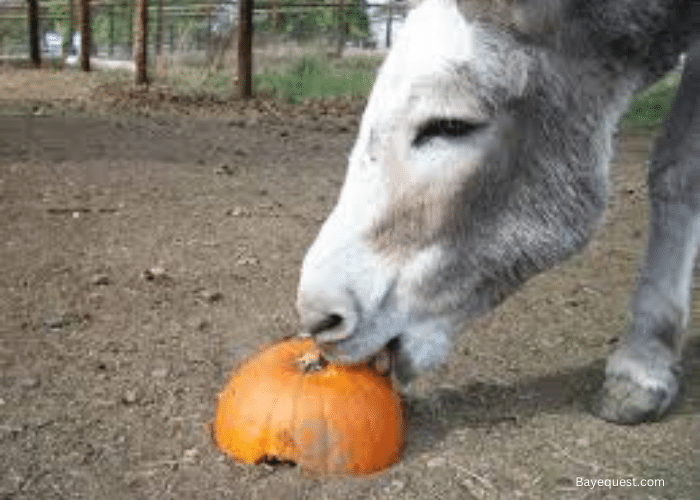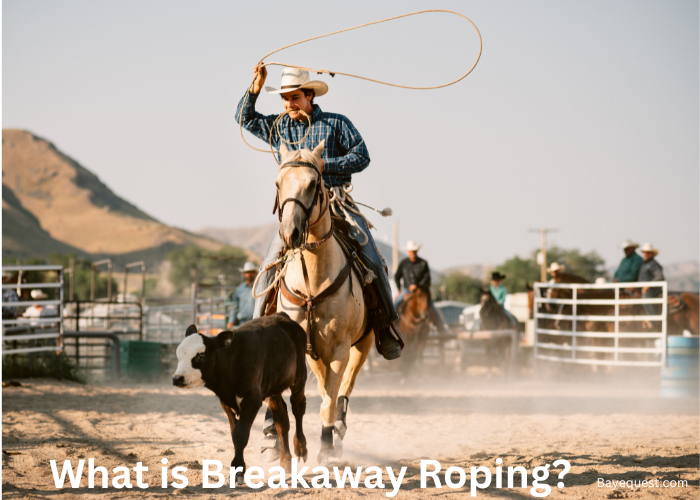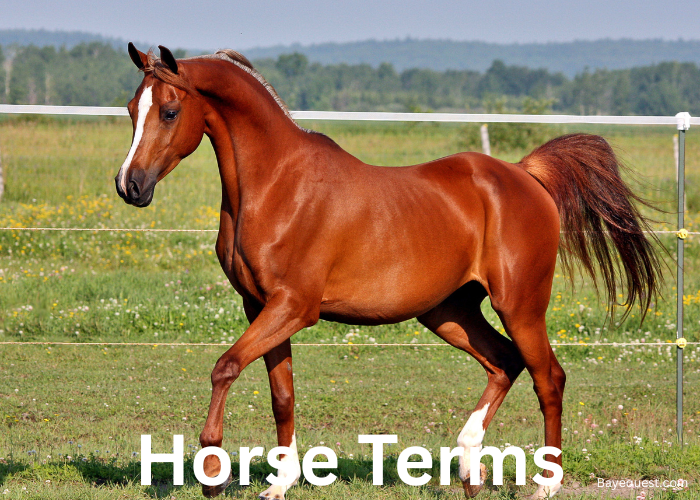As a horse owner, finding the right snacks for your equine friend can sometimes feel like preparing a feast for a notoriously picky king or queen. We all want to treat our four-legged companions to something special beyond the standard hay and grains.
However, you have to ask yourself what is safe or isn’t. In the vast kingdom of vegetables, gourds are often overlooked. Maybe their odd shapes or the hard skins make us pause and wonder, “Can horses really eat these?”
Buckle up. It’s going to be a gourd time.
Can Horses Eat Gourds?
Yes, horses can eat gourds, but it depends on the type of gourd. Most commonly eaten gourds like pumpkins and squashes are safe for horses.
They are a good source of vitamins and add variety to their diet. However, you must slowly introduce new food to your horse’s diet to see how they handle it.
Also, avoid bitter gourds as they can contain harmful toxins to horses. Always remove the hard skin and seeds before feeding gourds to your horse to prevent choking or digestive issues.
What are Gourds?
Gourds belong to the cucumber family, which includes many vegetables we eat, such as pumpkins, squash, and cucumbers. They grow on vines and can look very different from one another.
Some gourds are meant to be eaten, and we often cook with them in various dishes. Other gourds are mainly for decoration, especially in the fall when you see them used in displays for their interesting shapes and colors.
Related read: Do horses eat pumpkins?
Types of Gourds
Gourds come in various types, each with its own uses and characteristics. They’re generally categorized into three main types: cucurbita, lagenaria, and luffa. Here’s a look at each category:
1. Cucurbita (Ornamental gourds)
These are the colorful, often oddly shaped gourds commonly used for fall season decoration. They are not typically eaten because they are bitter and hard.
Types: Includes varieties like the Speckled Swan, Goosebumps, and Baby Boo. These gourds are known for their vibrant colors and unusual textures, making them popular for ornamental purposes.
2. Lagenaria (Utilitarian Gourds)
Also known as bottle gourds, these are usually grown for their utility. Once dried, their hard shells can be used for various purposes, like containers, utensils, or musical instruments.
Types: This category includes the Bottle Gourd, which is traditionally used as a water container or a dipper. Another common type is the Birdhouse Gourd, which is often dried and carved into birdhouses.
3. Luffa Gourds
Unlike the other types, luffa gourds are used when dried and peeled. They are best known as the source of natural sponges.
Types: The most common is the Luffa aegyptiaca, from which the luffa scrubbing sponge is made. It can also be eaten when young and tender, often appearing in Asian dishes.
4. Edible Gourds
These gourds are commonly found in cuisines around the world. They are not only nutritious but also versatile in cooking.
Types: This group includes pumpkins, which are used in everything from pies to soups; squashes like Butternut, Acorn, and Spaghetti Squash, which are staples in many dishes; and cucumbers, which are technically a gourd and consumed fresh.
5. Bitter Gourds
Known for their distinctive bitter flavor, these gourds are considered healthy and are widely used in Asian and African cuisines.
Types: The Bitter Melon is the most recognized type and is often used in stir-fries and curries and as a natural remedy for various health conditions.
Are Gourds Safe for Horses?
Yes, most gourds are safe for horses, but with a few important considerations. Edible gourds like pumpkins and squashes are generally safe and can be a nutritious addition to a horse’s diet. They provide vitamins and fiber, which can be beneficial in moderation.
However, you have to prepare them properly before feeding them to horses. Remove any hard seeds and the tough outer skin, as these can cause choking or digestive blockages.
On the other hand, some gourds, especially ornamental and bitter gourds, should be avoided. Ornamental gourds are often treated with chemicals like pesticides or preservatives, making them unsafe for consumption.
Bitter gourds contain compounds that can be toxic to horses and other animals, so they should not be fed to them.
In summary, while certain gourds like pumpkins and squash are safe for horses when prepared correctly, others are unsuitable and harmful, particularly ornamental and bitter varieties.
Can Horses Eat Ornamental Gourds?
No, horses should not eat ornamental gourds. These gourds are usually not grown for eating. They can be bitter and might have been treated with chemicals to look good as decorations.
It’s best to stick to gourds meant for eating, like pumpkins or squashes, and even then, prepare them properly by removing seeds and tough skin. This helps keep your horse safe and healthy.
Interesting read: What can Horses Eat and Not Eat?
Can Horses Eat Gourd Seeds?
No, feeding gourd seeds to horses is not a good idea. If not chewed properly, they can be a choking hazard and may also cause intestinal blockages.
Additionally, some gourd seeds might contain substances that aren’t ideal for horses to ingest in large quantities. When feeding your horse any part of a gourd, such as pumpkin or squash, it’s best to remove the seeds first to keep them safe and easy to digest.
Ornamental Vs Edible Gourds
Ornamental and edible gourds are like two sides of the same coin. Both belong to the same plant family but serve very different purposes.
Ornamental gourds are all about looks. They are often used as decorations in the fall, with vibrant colors, interesting shapes, and textures.
They’re not grown to be eaten. In fact, most of them are bitter and not tasty at all. Some might even be treated with chemicals to enhance their appearance, which makes them unsafe to eat.
On the other hand, edible gourds are the ones we cook and eat. These include pumpkins, squashes like butternut and acorn, and even cucumbers.
Edible gourds are grown for their flavor and nutritional value. They are a great source of vitamins and can be cooked in many different ways to make delicious dishes.
So, while ornamental gourds brighten up your fall decor, edible gourds can spice up your dinner plate. Each has its place, just not on the same plate.
Nutritional Content of Gourds
These values can vary depending on the specific variety of gourd, the growing conditions, and how they are prepared and cooked. Gourds are generally low in calories and fats but rich in vitamins and minerals, making them a healthy addition to a balanced diet.
Here’s a table representing the nutritional content of various commonly consumed gourds. The nutritional values are approximate and based on 100 grams of raw, edible portions of each gourd:
| Gourd Type | Calories | Protein (g) | Carbohydrates (g) | Dietary Fiber (g) | Vitamin C (mg) | Vitamin A (IU) | Potassium (mg) |
| Pumpkin | 26 | 1 | 7 | 0.5 | 9 | 8513 | 340 |
| Butternut Squash | 45 | 1 | 12 | 2 | 21 | 10630 | 352 |
| Acorn Squash | 40 | 1 | 10 | 1.5 | 10 | 367 | 347 |
| Spaghetti Squash | 31 | 1 | 7 | 1.5 | 2.1 | 120 | 109 |
| Zucchini | 17 | 1.2 | 3.1 | 1 | 17.9 | 200 | 261 |
| Cucumber | 16 | 0.7 | 3.6 | 0.5 | 2.8 | 105 | 147 |
| Bitter Melon | 17 | 1 | 4 | 2 | 84 | 471 | 296 |
| Bottle Gourd | 15 | 0.6 | 3.4 | 0.5 | 10.1 | Minimal | 150 |
| Luffa | 20 | 0.6 | 4.4 | 0.7 | 6.0 | 50 | 150 |
Benefits of Feeding Gourds to Horses
Feeding gourds to horses can be a great way to mix up their diet with healthy benefits. Here’s why:
First, gourds like pumpkins and squashes are full of good stuff. They have vitamins like A and C, which help keep your horse’s skin healthy and support their immune system. Plus, they’re low in calories, which is great for managing weight.
Gourds also add fiber to your horse’s diet. This can help keep their digestion running smoothly, essential for their overall health.
Another plus is hydration. Gourds have a lot of water, which can help keep your horse hydrated, especially during hotter months or if they’re not drinking enough on their own.
So, adding some gourd to your horse’s diet can be a tasty, healthy treat. Remember to introduce it slowly and ensure it’s prepared safely, without seeds or tough skin, to avoid any issues.
How to Feed Gourds to Horses
Feeding gourds to horses can be a nutritious treat when done properly. Here’s a simple guide on how to do it safely:
Choose the right gourds. Stick to edible gourds like pumpkins and squashes. In moderation, these are safe for horses. Avoid ornamental and bitter gourds, as they can be toxic.
Wash thoroughly. Always wash the gourds well to remove any dirt or chemicals from the surface.
Cut and remove the inedible parts. Cut the gourd into manageable pieces. Remove the tough outer skin and seeds, which can be a choking hazard or cause intestinal blockages.
Start with small amounts. Introduce gourds slowly into your horse’s diet, starting with small pieces to see how your horse reacts. This will also help you monitor for any digestive upset.
Raw or cooked. You can feed gourds raw or cooked. If you choose to cook them, steaming is a good option as it retains most nutrients without any additives.
Mix with regular feed. Mix the gourd pieces into the regular feed to make them easier for your horse to eat. This can make them more appealing and ensure they eat them along with their normal diet.
Monitor your horse. Keep an eye on your horse for any changes in behavior or digestion after they eat gourds. If you notice anything unusual, consult your veterinarian.
How Many Gourds Can a Horse Eat?
The amount of gourds a horse can safely eat depends on their size, overall health, and regular diet. Remember, gourds should just be a treat, not a staple part of their meals.
If you’re starting to introduce gourds, begin with a small amount. A few diced pieces are mixed into their usual feed to see how they handle it. Keep treats to less than 10% of a horse’s daily intake, so moderation is key.
A typical serving might be about a cup of diced gourd, but this should be adjusted according to your horse’s size and dietary needs. Aim to offer gourds as a treat, maybe once or twice a week, to avoid giving them too much sugar and to keep their diet balanced.
How to Prepare Gourds for Horses
Preparing gourds for horses is pretty straightforward.
First, pick gourds that are safe for horses, like pumpkins and squashes. Wash the gourd thoroughly to remove dirt or chemicals.
Next, cut the gourd into manageable pieces. Scoop out and discard the seeds and any stringy parts inside, as these can be a choking hazard or cause digestive issues.
Finally, remove the tough outer skin because it’s hard for horses to digest. You can serve the gourd raw or cooked, but raw is generally easier and just as good for the horse.
Just remember to introduce gourds slowly into their diet to make sure they agree with your horse’s stomach.
Guard Treat for Horses
Gourds make fantastic treats for horses due to their nutritional value and palatability. Here are a few different ways you can prepare gourd treats to add variety and enjoyment to your horse’s diet:
1. Simple fresh gourd treats
Ingredients. Edible gourds such as pumpkin or squash.
Preparation. Wash the gourd thoroughly, remove seeds and fibrous innards, peel off the tough outer skin, and cut into small, manageable chunks. Serve these chunks directly to your horse as a fresh treat.
2. Gourd and carrot mash
Ingredients. Edible gourd, carrots, and a splash of water.
Preparation. Peel and chop the gourd and carrots. Steam or boil until soft, and then mash together with a little water until smooth. Let it cool before serving. This mash is especially good for older horses with dental issues.
3. Baked gourd treats
Ingredients: Edible gourd, oats, and a binding agent like molasses or a little honey.
Preparation: Preheat your oven. Mix grated gourd with oats and a small amount of molasses or honey to create a sticky mixture. Shape into small balls or cookies and bake on a lined tray until firm. Cool completely before serving.
4. Gourd and apple cubes
Ingredients. Edible gourd, apples.
Preparation. Wash and peel the gourd and apples. Remove the seeds and cut both into cubes. Mix and serve fresh, or for a different texture, lightly steam them before cooling and serving.
See also: Can Horses Eat Apple Seeds?
5. Frozen gourd treats
Ingredients. Edible gourd, water, and optional fruits like berries or apples.
Preparation. Peel and cut the gourd into small pieces. Blend with a little water and optional fruits until smooth. Pour into ice cube trays or small molds and freeze. Serve frozen for a refreshing treat during hot weather.
Potential Risks of Feeding Your Horse Gourds
Feeding gourds to horses can offer nutritional benefits, but there are also potential risks that should be considered to ensure the health and safety of your horse. Here are some key risks to be aware of:
1. Choking hazard
Risk: Gourds, especially when not properly prepared, can be a choking hazard. Large chunks, tough skin, or seeds might not be chewed thoroughly by the horse.
Prevention: Always cut the gourd into small, manageable pieces and remove all seeds and tough outer skins before feeding.
2. Digestive issues
Risk: Introducing any new food, including gourds, too quickly to a horse’s diet can cause digestive upset. Symptoms might include colic or diarrhea.
Prevention: Gradually introduce gourds into your horse’s diet and monitor their reaction. Start with small amounts and increase slowly if there are no adverse effects.
3. Toxicity
Risk: Some gourds, particularly ornamental and bitter gourds, contain compounds that can be toxic to horses. Ingesting these can lead to serious health issues.
Prevention: Only feed your horse gourds known to be safe for consumption, such as pumpkins and certain squashes. Avoid any gourds grown for decoration or those known to be bitter.
4. Pesticide exposure
Risk: Gourds purchased from stores or untrusted sources may have been treated with pesticides or other chemicals, which can be harmful if ingested.
Prevention: Use organic gourds or thoroughly wash any gourds before feeding them to your horse.
5. Nutritional imbalance
Risk: Overfeeding gourds can lead to a nutritional imbalance. Although gourds are nutritious, they should not replace a balanced diet.
Prevention: Treat gourds as a supplement to the diet, not a staple. Ensure that they make up only a small portion of the horse’s overall intake.
Horses that Shouldn’t Eat Gourds
While gourds can be a healthy treat for many horses, certain horses should avoid them. Here’s a list of horses that shouldn’t eat gourds:
- Horses with dental issues
- Horses with digestive problems
- Horses with allergies
- Metabolically challenged horses
- Overweight horses
- Foals and young horses
Safe Treats for Your Horses
There are plenty of safe treats you can give to your horse that are both nutritious and enjoyable. Here are some great options:
- Carrots: A classic favorite. They’re crunchy, sweet, and packed with vitamins.
- Apples: Sweet and juicy. Remove the seeds and core, as they can be harmful.
- Bananas: High in potassium and easy for horses to eat. You can feed them whole or sliced.
- Pumpkin: Safe and nutritious when prepared properly. Remove seeds and skin before feeding.
- Watermelon: Refreshing and hydrating, especially in hot weather. Remove the seeds and rind.
- Strawberries: Sweet and high in antioxidants. Feed them whole or sliced.
- Blueberries: Packed with vitamins and antioxidants. Perfect for a small treat.
- Pear: Sweet and soft. Just remove the core and seeds. (Read also: How to Introduce Pears to a Horse Safely.)
- Sweet Potatoes: Cooked and cubed. They’re nutritious, and horses usually love the taste.
- Beet pulp: A good source of fiber, soaked in water before feeding.
- Cucumber: Hydrating and low in calories. Feed in small slices.
- Peppermints: A favorite for many horses. Just be mindful of the sugar content.
FAQs
Can horses eat cucumber?
Yes, horses can eat cucumbers. They’re a great, low-calorie treat that’s hydrating and easy to digest. Slice them up and offer them in moderation.
Can horses eat squash?
Yes, horses can eat squash. Varieties like butternut and acorn squash are safe and nutritious. Remove the seeds and tough skin before feeding it to your horse.
Can horses eat pumpkins?
Yes, horses can eat pumpkin. It’s full of vitamins and fiber. Remove the seeds and outer skin before giving it to your horse. Pumpkin can be a tasty and healthy treat for them.
Conclusion
So, can horses eat gourds? Absolutely, but only certain kinds.
Stick to pumpkins and squashes, and always prep them right. Remove those pesky seeds and tough skins. Your horse will enjoy the tasty change and the extra vitamins and fiber.
Remember, moderation is key. Treat gourds as a fun addition, not the main course. Next time you’re carving a pumpkin or cooking squash, think about sharing a bit with your horse.
They’ll love it, and you’ll enjoy seeing them munch away happily. So add some gourd-geous variety to their diet and watch them trot with joy.








